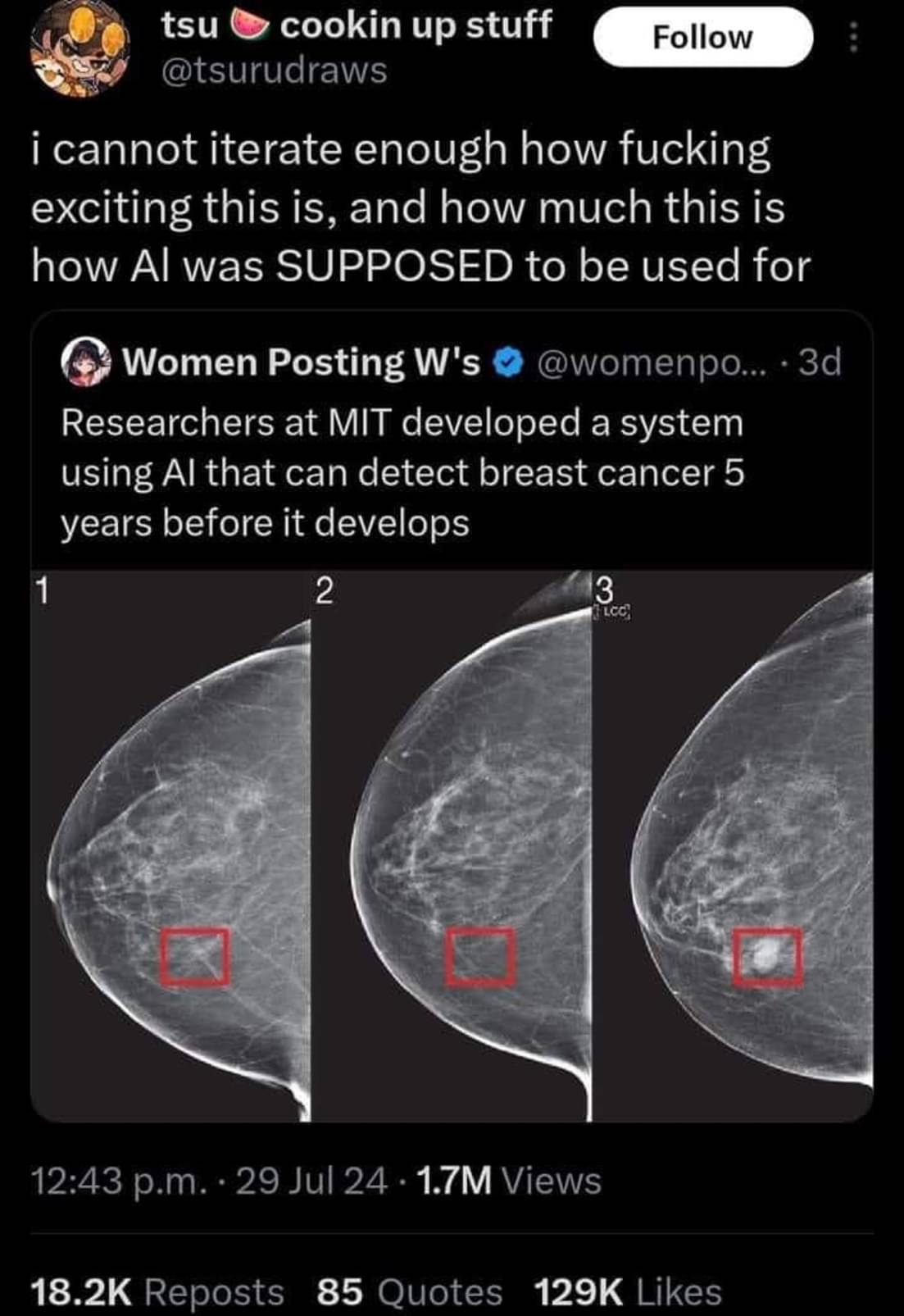this post was submitted on 02 Aug 2024
1496 points (98.4% liked)
Science Memes
11516 readers
1890 users here now
Welcome to c/science_memes @ Mander.xyz!
A place for majestic STEMLORD peacocking, as well as memes about the realities of working in a lab.

Rules
- Don't throw mud. Behave like an intellectual and remember the human.
- Keep it rooted (on topic).
- No spam.
- Infographics welcome, get schooled.
This is a science community. We use the Dawkins definition of meme.
Research Committee
Other Mander Communities
Science and Research
Biology and Life Sciences
- [email protected]
- [email protected]
- [email protected]
- [email protected]
- [email protected]
- [email protected]
- [email protected]
- [email protected]
- [email protected]
- [email protected]
- [email protected]
- [email protected]
- [email protected]
- [email protected]
- [email protected]
- [email protected]
- [email protected]
- [email protected]
- [email protected]
- [email protected]
- [email protected]
- [email protected]
- [email protected]
- [email protected]
- !reptiles and [email protected]
Physical Sciences
- [email protected]
- [email protected]
- [email protected]
- [email protected]
- [email protected]
- [email protected]
- [email protected]
- [email protected]
- [email protected]
Humanities and Social Sciences
Practical and Applied Sciences
- !exercise-and [email protected]
- [email protected]
- !self [email protected]
- [email protected]
- [email protected]
- [email protected]
Memes
Miscellaneous
founded 2 years ago
MODERATORS
you are viewing a single comment's thread
view the rest of the comments
view the rest of the comments

How would a false positive create more harm? Isn't it better to cast a wide net and detect more possible cases? Then false negatives are the ones that worry me the most.
It’s a common problem in diagnostics and it’s why mammograms aren’t recommended to women under 40.
Let’s say you have 10,000 patients. 10 have cancer or a precancerous lesion. Your test may be able to identify all 10 of those patients. However, if it has a false positive rate of 5% that’s around 500 patients who will now get biopsies and potentially surgery that they don’t actually need. Those follow up procedures carry their own risks and harms for those 500 patients. In total, that harm may outweigh the benefit of an earlier diagnosis in those 10 patients who have cancer.
Well it'd certainly benefit the medical industry. They'd be saddling tons of patients with surgeries, chemotherapy, mastectomy, and other treatments, "because doctor-GPT said so."
But imagine being a patient getting physically and emotionally altered, plunged into irrecoverable debt, distressing your family, and it all being a whoopsy by some black-box software.
That's a good point, that it could burden the system, but why would you ever put someone on chemotherapy for the model described in the paper? It seems more like it could burden the system by increasing the number of patients doing more frequent screening. Someone has to pay for all those docter-patient and meeting hours for sure. But the benefit outweighs this cost (which in my opinion is good and cheap since it prevents future treatment at later stages that are expensive).
Biopsies are small but still invasive. There's risk of infection or reactions to anesthesia in any surgery. If 100 million women get this test, a 5% false positive rate will mean 5 million unnecessary interventions. Not to mention the stress of being told you have cancer.
5 million unnecessary interventions means a small percentage of those people (thousands) will die or be harmed by the treatment. That's the harm that it causes.
You have really good point too! Maybe just an indication of higher risk, and just saying "Hey, screening more often couldn't hurt." Might actually be a net positive, and wouldn't warrant such extreme measures unless it was positively identified by, hopefully, human professionals.
You're right though, there always seems to be more demand than supply for anything medicine related. Not to mention, here in the U.S for example, needless extra screenings could also heavily impact a lot of people.
There's a lot to be considered here.